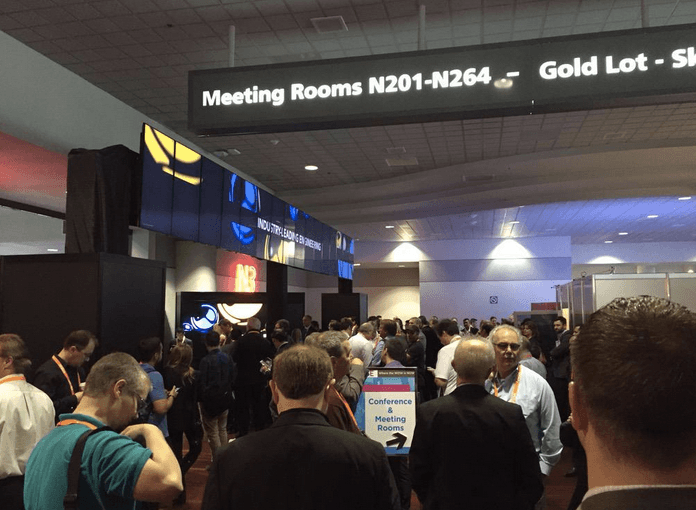
DSE 2015 Day Two Impressions
March 14, 2015 by Dave Haynes
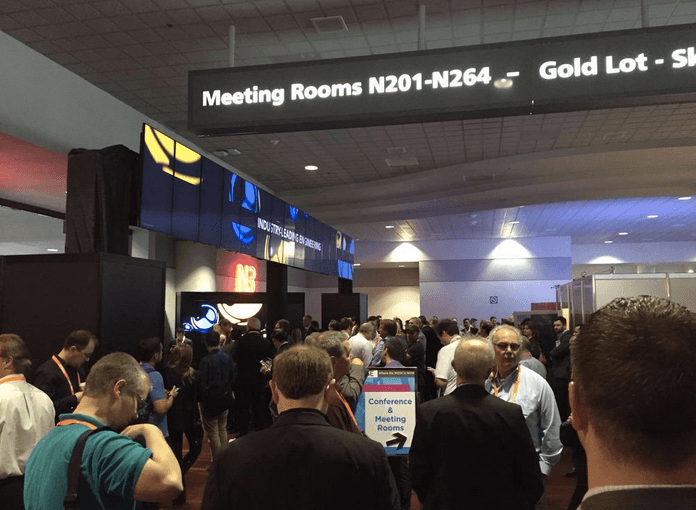
Back at home and already missing the big blue skies and shirt sleeves weather of LA and Las Vegas. Sigh.
Day 2 at Digital Signage Expo was still bat outta hell mode for me, running around looking at stuff and steering clients here and there to see things and meet people. So as usual, I got nowhere near seeing everything I wanted to see. I wanted to drop by Navori, for example, and never did bump into the booth. So, ummm, sorry.
What astonished me is how there are STILL more software companies getting into this game, offering SaaS CMS platforms and pitching how what they have is easy. Sorry, there are indeed clunky, hard to use platforms out there, but scores of companies already market based on doing the easy thing. And some of them are indeed easy.
What was it that made a team decide digital signage software was an untapped market???
I also ran into a couple of established companies I never knew existed – like SM Infinity and Stratos Media.
SM, out of Round Rock, Texas (near Austin), was interesting because they put an emphasis on doing content/creative for clients, having watched their own easy platform lit up with end-users, only to see programming stay the same for weeks and months. By taking over ops, the programming stays fresh and networks actually do the intended jobs.
Their experience – with mostly looks like the SMB market – is businesses want this tech, but they are happy to have somebody else worry about it while they stay focused on their core operations.

Stratos is a very interesting company out of Brisbane, Australia. I will write more about them in a separate post, but suffice to say for now that the platform is written on and optimized for the Chrome operating system. So it is much more than a web player sitting on top of the Chrome software management console that Google is now selling into digital signage.
Stratos is not a start-up, but part of a group that includes TV and radio, and high-end speakers.
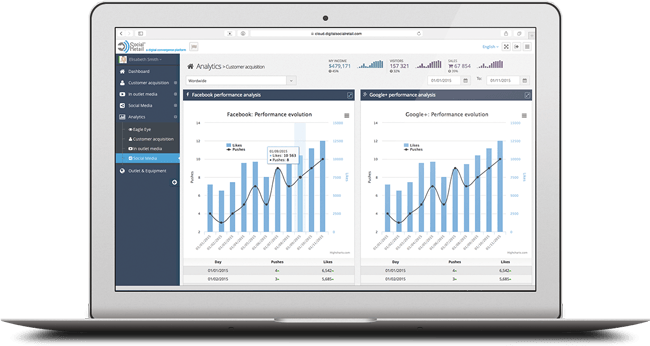
I chatted with a startup called Digital Social, out of France and Jerusalem, that has a focus I’ve not seen – a blend of digital signage, retail analytics, social and beacons. Certainly I have seen mainstream signage platforms bolting on BLE and social, but not in an integrated way that owes to starting out with that mindset.
By the looks of the little box the company uses for media players, there is a Raspberry Pi board inside.
Microspace has been around forever, selling satellite distribution services. That’s still happening, but the Raleigh, NC company is pivoting a bit and marketing machine to machine (M2M) cellular set-ups. You can now get 1 GB of high speed data transfer for about $30 a month, and put accounts in a low-cost sleep mode for networks that are seasonal.
I was impressed by a Danish company, Real Fiction, that turned up with a nice set of hologram displays. I have zero enthusiasm for glasses-free 3D and some of the goofball hologram stuff that still turns up at shows. But this is NOT that. These are very nicely kitted displays that are built for retail merchandising that can directly blend small luxury items with digital visuals.
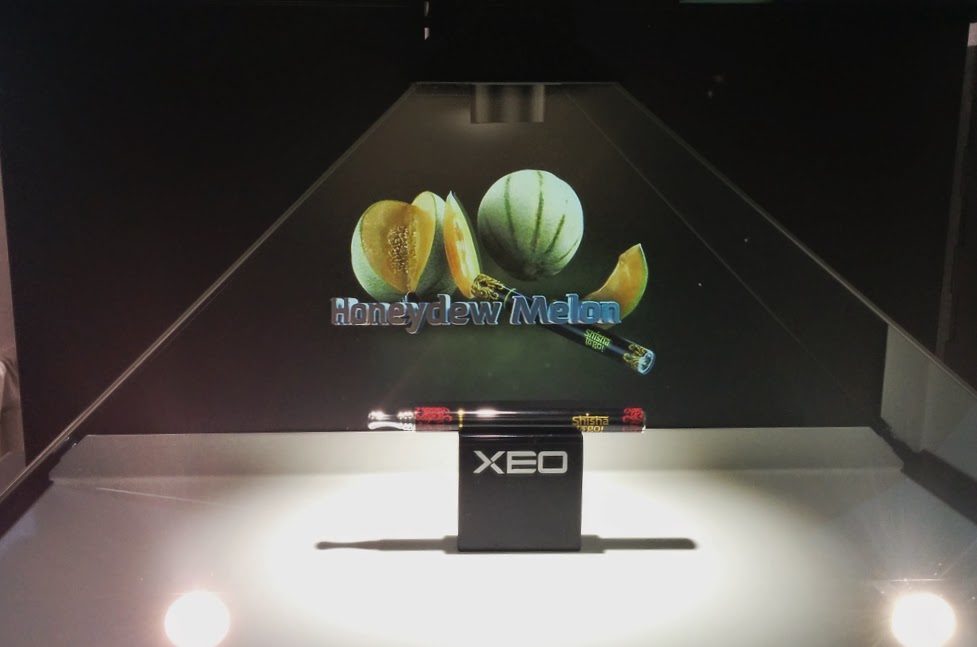
So imagine a small display on a pedestal for one of those vape e-cig things with the virtual vapor, or a luxury watch with ambient backgrounds or product statements floating around them. The company uses the Pepper’s Ghost illusion technique, that’s been around forever, to reflect visuals from a flat panel in the ceiling of the case.
Very clever, and the cost was not at all crazy – sub $2K for the smaller unit.

I was told by a few people I should go have a look at the MultiTaction curved wall, and my first reaction was, “Yeah, so?” Then I looked around and grabbed Mitch Mittler from DMG, easily one of the brightest technical guys in the business, who explained the big deal was not that someone built a video wall in a curve, but that the touch technology was integrated into the panels and seamless.
The multi-user interactive wall supports an unlimited number of concurrent users, has curvatures of up to 360 degrees and widths up to 96 feet.
I walked through the Intel booth, which was themed around the Internet of Things. I left about 2 minutes later. Sorry, but for such a huge booth and great underlying technology, a lot of what was shown was kinda pathetic and did precious little to showcase the whole IoT proposition.
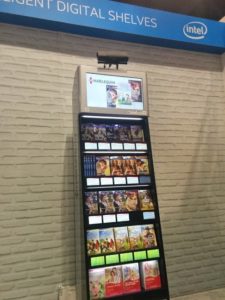 The engineers have done a great job coming up with tech that’s an effective foil to ARM and Android, and the company WAS showing hardware via partners, but it was also showing off good stuff like intelligent shelves using Kinect (a facepalm moment) and screens inserted in little surfboards.
The engineers have done a great job coming up with tech that’s an effective foil to ARM and Android, and the company WAS showing hardware via partners, but it was also showing off good stuff like intelligent shelves using Kinect (a facepalm moment) and screens inserted in little surfboards.
I also wondered how, under the new partner booth rules I thought were in play with the show organizer, some companies had little patches of wall and carpet in the biggest exhibitor booths, like Intel. I thought that wasn’t allowed under new rules, and was behind how at least one well-known, partner-centric vendor didn’t even buy a booth.
I don’t know much at all about the trade show business, but I assume one very large booth has more real value in optics and marketing than the equivalent dollar value of a bunch of little guys with roll-up signs and rented furniture.
The show was definitely slower on Thursday, but that’s always the case. As has been noted elsewhere, overall traffic doesn’t matter as much as the quality of that traffic. I know there were buyers there because some of them were at my mixer, and some of them were clients.
I talked to vendors who indicated they were impressed by the number and maturity of end-users they saw. They had people walking up knowing what they wanted and when they were going to start using it.



Leave a comment